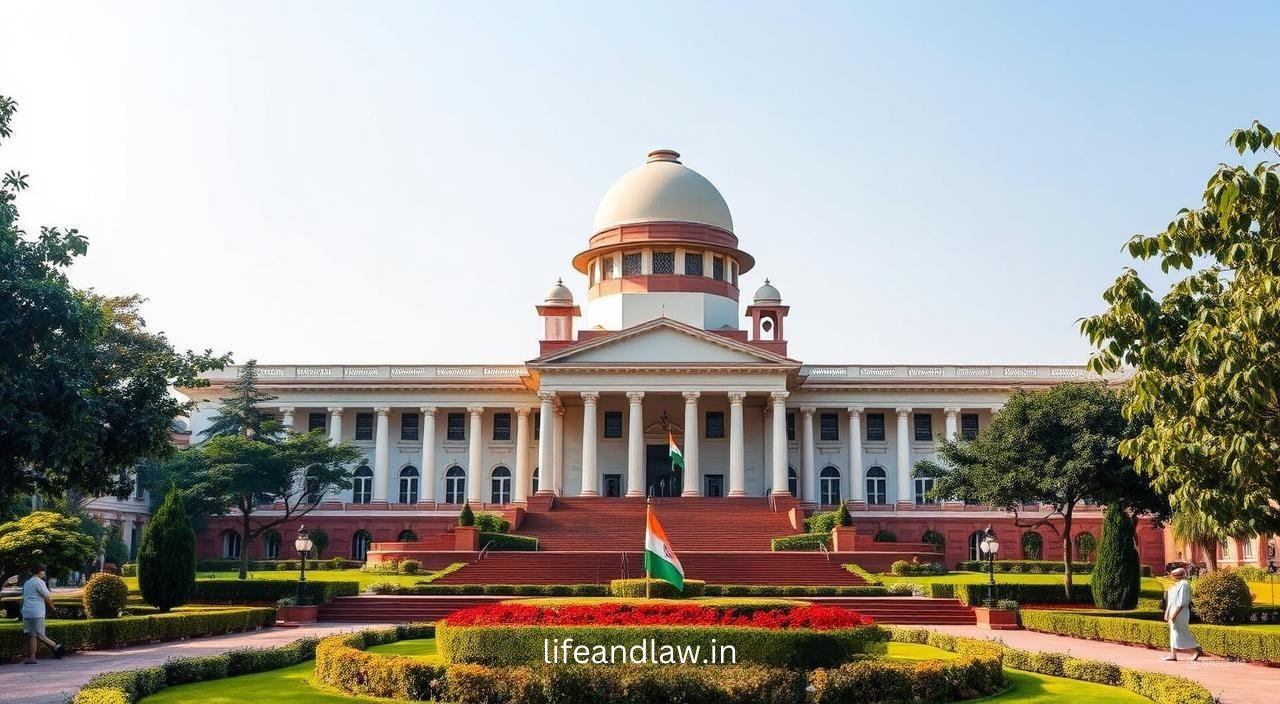Trending

The judicial system in India is a foundational institution of its democracy and upholds the rule of law, protects fundamental rights, and ensures justice to all citizens. The system evolved significantly from ancient traditions; most of the transformation came in the colonial and post-independence periods.
The judiciary was developed to operate independently, in order to separate powers, and promote the rights of its citizens. Over the decades, it played a very significant role in law interpretation and social issues that helped to initiate reforms, specially through judicial activism and PILs.The blog is basically an insight into the judicial system of India, its prominent developments, challenges, and transformation in modern times. It talks about how the judiciary stands to uphold the value of the constitution and deliver justice through addressing the problems of the present era.
Judicial systems in India were different at the time of pre-colonial rule. It was decentralized in ancient India, where village councils known as panchayats resolved cases with their customs and religious laws. The Manusmriti and Arthashastra offered guidelines in moral and legal principles to govern society, including the dispensation of justice. Usually, the kings were the supreme judges of the land, as long as they followed the rule of Dharma (the moral law).
Legal systems were more formalized in major empires like the Mauryas and Guptas. The king, with the help of ministers and legal scholars, ensured the administration of justice through structured courts. The Mughal period further consolidated judicial authority, with courts following Islamic law (Sharia) alongside local customs.
Despite all these diversities, they were largely community-based and delivered justice with the prevailing values and norms of society, not being a uniform or codified structure.

The British colonial era led to a major overhaul in the Indian judicial system, ultimately forming a base for what the contemporary legal architecture of India was to be. Once the British came to India, they imposed a centralized, formalized court structure, which is in sharp contrast to the diverse, localized systems of prior history. They aimed to simplify legal procedures and thus enforced English common law, which formed the basis of India’s modern legal system.
One of the major developments was the Supreme Court of Calcutta, set up in 1774, followed by the establishment of High Courts in all important cities by the Indian High Courts Act of 1861. The courts were modeled on British ones and followed English law, but they also adapted themselves to Indian conditions. The Indian Penal Code (IPC) 1860 and the Criminal Procedure Code (CrPC) 1861 were codified criminal laws which brings uniformity and structure to the legal procedures throughout the country.
The colonial legal system also established a clear hierarchy of courts, including District Courts, Session Courts, and Magistrate Courts, with appeals going up to the higher courts. It thus replaced India’s earlier decentralized judicial processes to centralizing judicial authority in British-appointed officials. Despite its deficiencies, this system would lay the groundwork for India’s post-independence judiciary.

The Indian judiciary had undergone drastic changes post independence anchored with the adoption of Constitution on 1950. The establishment of Supreme Court of India as an apex court started an era with which judiciary became guardian of constitutional values, Fundamental rights and the rule of law. Under Article 124 to 147 of the Constitution, independence for judicial operations is enshrined without any interference either from the executive or legislative branches.The Indian Constitution had recognized a pyramidal structure of judiciary consisting of Supreme Court, High Courts, and below them, the subordinate courts. In a nutshell, this framework was devised to ensure uniformity of law upon the entire country.
A defining feature of the post-independence judiciary has been judicial review, in which courts review the constitutionality of legislative and executive decisions. Landmark rulings, for example, the Kesavananda Bharati case (1973)which instituted the basic structure doctrine to protect core constitutional values such as democracy and secularism.
The phenomenon of Public Interest Litigation (PIL) in the late 1970s further democratized the access to justice. It allowed courts to address such significant issues which otherwise seemed to remain unsolved like rights of prisoners (Hussainara Khatoon case) and workplace harassment (Vishaka guidelines) which made marginalized sections of society powerful.
After that , the judiciary also had to play a crucial role to balance federalism. At times, it has taken the role of an intermediary between the central and state government to ensure that India functions harmoniously as a federal country.A marked feature of judicial development is the establishment of specialized tribunals and courts. There are administrative tribunals, consumer courts, environmental courts, and family courts that have greatly assisted in managing diverse legal issues in a rapidly evolving society.
Introduction of e-courts under the eCourts Mission Mode Project has made the other focus of modernization, whereas digitalization aims at creating a more efficient process by adding accessibility to the judiciary through digital means, primarily within isolated areas.However, the problems do not end there. Indian courts suffer from problems such as backlogs, delays in judgments, and poor management of courts.
So,The post-independence judiciary has developed as the protector of constitutional principles, a supporter of social justice, and an exponent of modernization. Much has been achieved thus far, but continuous reform and innovation are needed to ensure it remains effective.
| Pre-Independence Era | Post-Independence Era |
|---|---|
|
|

1. Pendency of Cases: Number of pending cases in Indian courts has been increasing day by day.Delay in justice goes against the principle of “justice delayed is justice denied.”
2. Shortage of Judges: India has a very low judge-to-population ratio compared to the international standards. There are vacant judicial positions as well, which puts additional burden on the system.
3.Accessibility and Affordability: High cost of litigation and long procedures act as a deterrent for the economically weaker sections to come to courts. The legal aid services are available but underutilized.
4. Inadequate Infrastructure: There are several courts that lack basic infrastructure and technological equipment. The infrastructure shortcomings affect smooth running of the judicial operations.
5. Digital Divide: E-courts and digital case management have been a promise but are limited to uneven internet access, especially in rural areas.
6. Corruption and Accountability Issues: Cases of corruption and actual judicial bias dent the confidence level of the people. The mechanisms to hold the judiciary accountable are not strong enough.
7. Pendency of Appeals in Higher Courts: It takes years to dispose of appeals in High Courts and the Supreme Court.
8. Time Consumption of Procedural Procedures: Complex procedures involving too much adjournments are some of the greatest time consumption procedures.
9. Non-Adoptation of Alternative Dispute Resolution : ADR procedure like mediation and arbitration mechanism is still underutilization and are contributing to Court caseloads.

1. More Judicial Appointments: Reducing the judge shortage would help reduce the number of pending cases.
2. Improvement in Infrastructure: Upgrading the court facilities and technology would facilitate smooth working.
3. Alternative Dispute Resolution (ADR): More mediation, arbitration, and conciliation would ease court workloads.
4. Expand Legal Aid Services: Enhance access to justice for economically weaker sections.
5. Digitalization: Broaden e-court initiatives to rural areas and ensure digital accessibility.
6.Enhance Accountability: Implement robust mechanisms to ensure transparency and ethical conduct in the judiciary.
The development of Indian judicial system is a journey in transformation and growth, closely aligned with the changing socio-political landscape of the nation. Since independence, India’s judiciary has become the strong institution that guards constitutional tenets, individual rights, and the rule of law. The Supreme Court was established in the year 1950 with the objective of having a free judiciary to ensure a democratic system and deliver equal justice to all.
Innovations such as judicial review and the basic structure doctrine have equipped the judiciary to function as a guardian of constitutional values and the spirit of Indian democracy. Public Interest Litigation (PIL)has further increased access to justice by making the courts listen to social causes and rights of weaker sections. Also modernization efforts, like e-courts and specialized tribunals, bring improvements but need further strengthening.
It’s only ahead that continuous reforms, better infrastructure, and smoother judicial processes will be a key. The judiciary will fulfill its promise of delivering fair justice and continue to stand as the bedrock of India’s democratic and legal machinery.

Adv. Abdul Mulla (Mob. No. 937 007 2022) is a seasoned legal professional with over 18 years of experience in advocacy, specializing in diverse areas of law, including Real Estate and Property Law, Matrimonial and Divorce Matters, Litigation and Dispute Resolution, and Will and Succession Planning. read more….
Copyright BlazeThemes. 2025